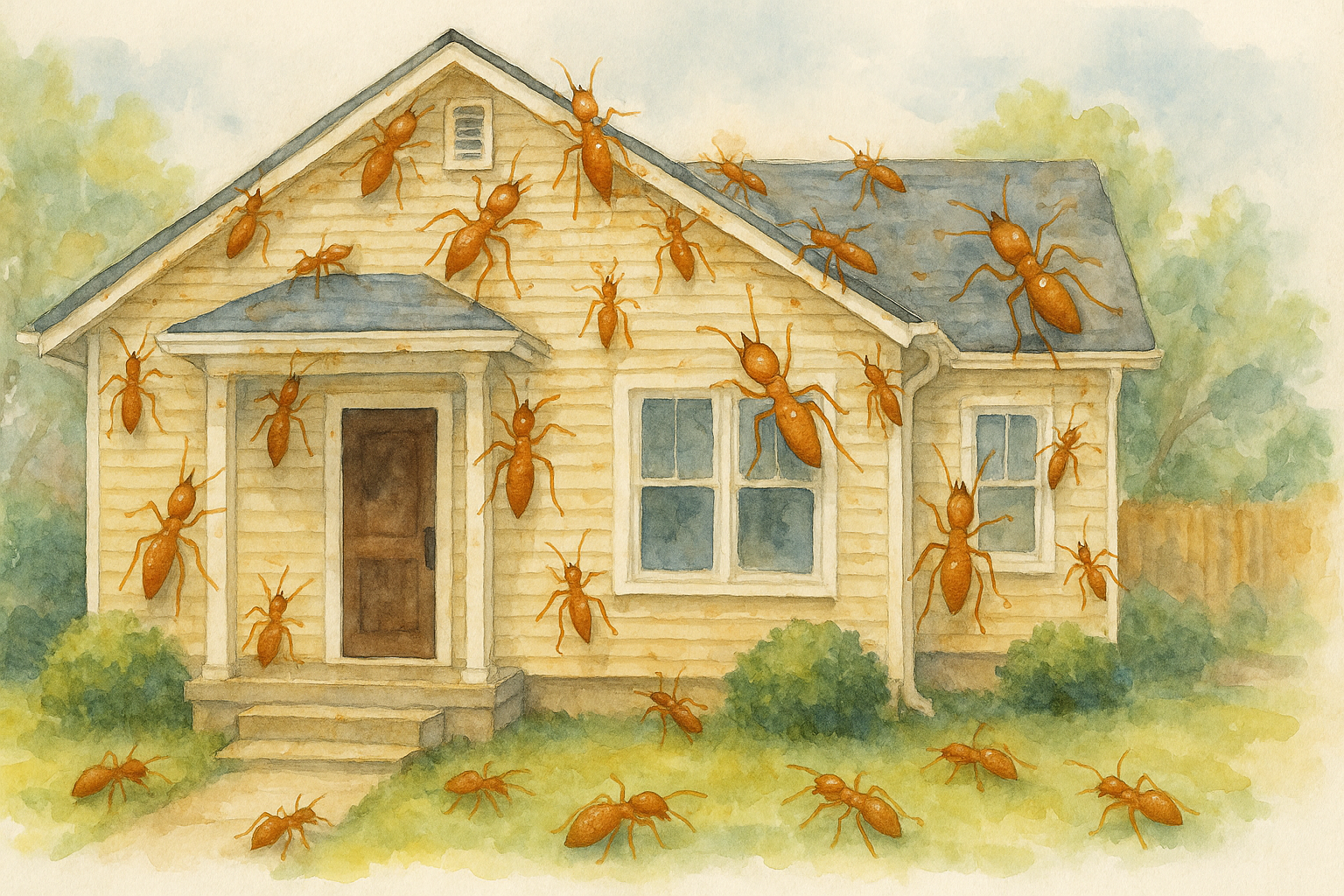Wasps, hornets, and yellow jackets are all members of the wasp family (Vespidae), but they have distinct physical characteristics, behaviors, and habitats. While these insects can all sting and are often considered pests, understanding their differences can help with identification and control.

Wasps
Wasps, particularly paper wasps (Polistes spp.), are the most commonly encountered wasp species. They have slender bodies, long legs, and are typically reddish-brown or yellow with black markings. Wasps are known for their nests, which are often built in sheltered areas such as under eaves, in sheds, or trees. Unlike bees, wasps can sting multiple times without dying. They are predators of other insects, making them beneficial for controlling pest populations, though they become aggressive when their nests are threatened.
Hornets
Hornets are a type of wasp, but they are larger and more aggressive. They have thicker bodies than typical wasps and tend to be black with white or yellow markings. The European hornet (Vespa crabro) and the bald-faced hornet (Dolichovespula maculata) are two species found in North America. Hornets prefer to nest in hollow trees, attics, or wall voids. Their venom is more potent than that of wasps or yellow jackets, which means their stings are more painful. Hornets are generally less aggressive than yellow jackets but will defend their nests vigorously (Smith-Pardo et al., 2020).
Yellow Jackets
Yellow jackets (Vespula spp.) are small, robust wasps with bright yellow and black markings. Unlike hornets and paper wasps, yellow jackets are ground-nesters, often found in burrows, wall voids, or logs. They are highly aggressive and are notorious for scavenging food at picnics or trash bins, making them more likely to interact with humans. Yellow jackets can sting multiple times and are particularly dangerous when their nest is disturbed. Their venom contains allergens that can cause serious allergic reactions in some individuals (King et al., 1996).
Conclusion
Wasps, hornets, and yellow jackets all belong to the wasp family but differ in size, nesting habits, and behavior. Wasps, including hornets, are beneficial predators, while yellow jackets are more likely to interact with humans and become a nuisance. Recognizing these differences can help with proper identification and pest management.
Works Cited
Smith-Pardo, A. H., Carpenter, J. M., & Kimsey, L. S. (2020). Corrigendum to: “The Diversity of Hornets in the Genus Vespa (Hymenoptera: Vespidae; Vespinae), Their Importance and Interceptions in the United States.” Insect Systematics and Diversity.https://academic.oup.com/isd/article/4/3/2/5834678?login=false.
King, T. P., Lu, G., Gonzalez, M., Qian, N., & Soldatova, L. (1996). Yellow jacket venom allergens, hyaluronidase and phospholipase: sequence similarity and antigenic cross-reactivity with their hornet and wasp homologs and possible implications for clinical allergy.
The Journal of allergy and clinical immunology.https://www.jacionline.org/article/S0091-6749(96)70093-3/fulltext.
Contact Today For $100 Off Your Initial Service!
⭐⭐⭐⭐⭐
Backed by our Bigfoot Guarantee!
What Customers Are Saying:
"Everyone from Bigfoot is awesome. They are always on time. They're extremely thorough. I've not had a single issue in the two years they have been treating our home. Well worth it!"
T. Potter | Meridian, ID






